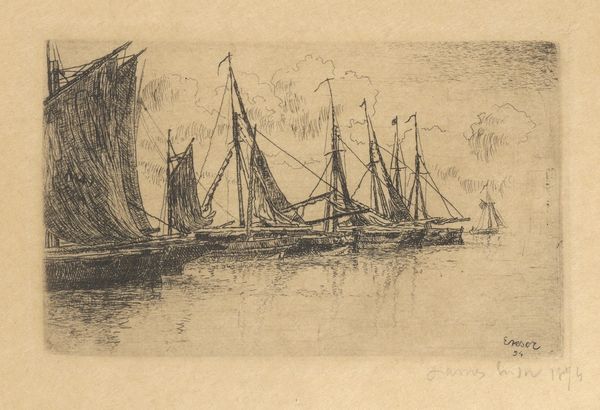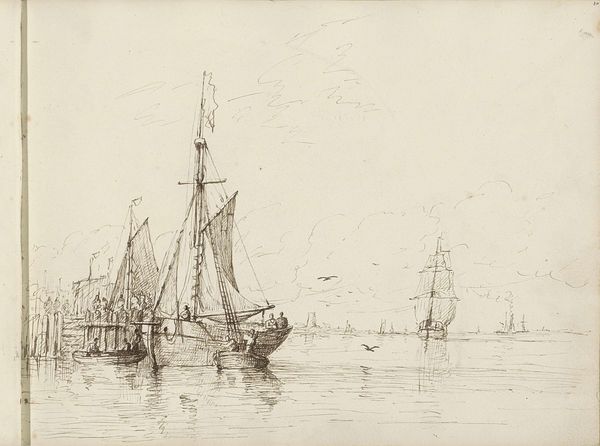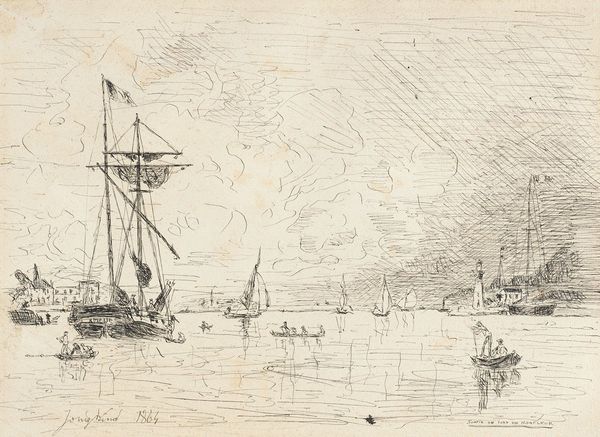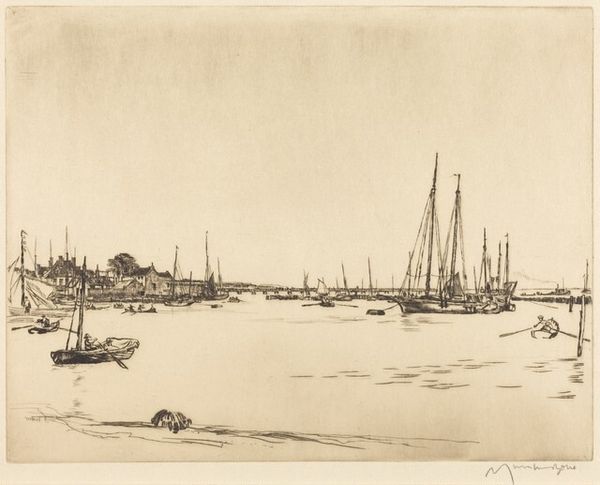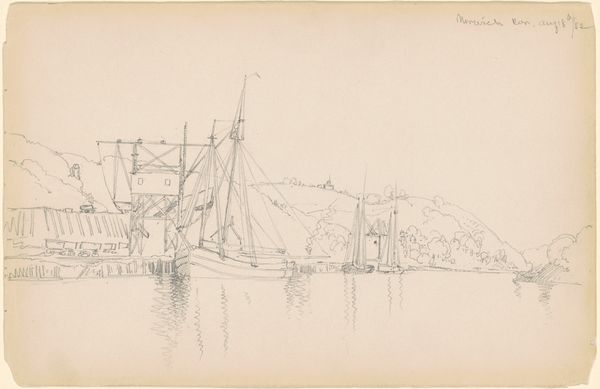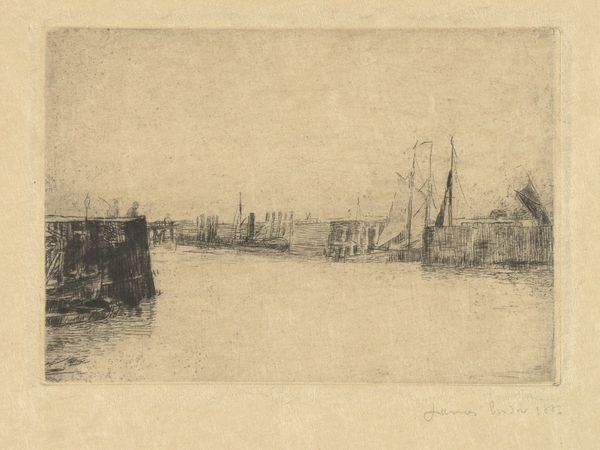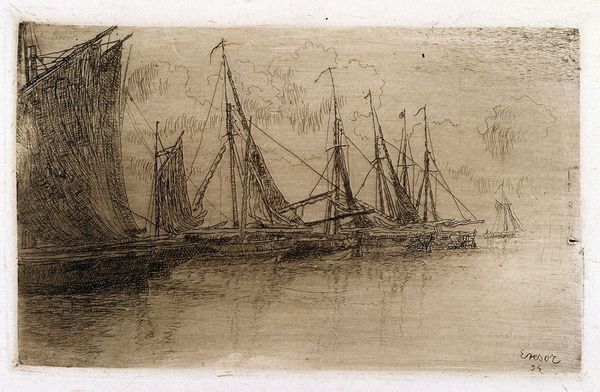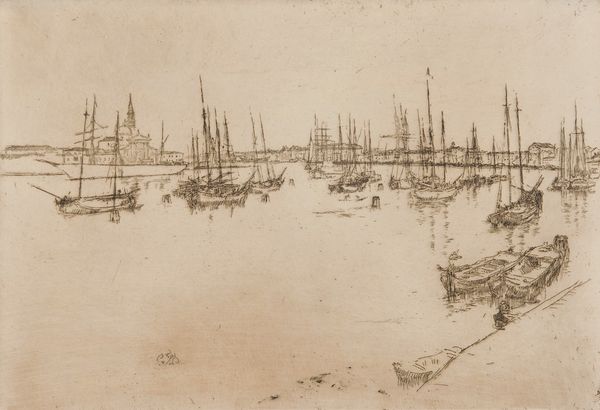
drawing, print, etching
#
drawing
# print
#
etching
#
landscape
#
symbolism
Copyright: Public Domain: Artvee
Curator: This is "Sloepen," a compelling etching created by James Ensor in 1888. What’s your initial impression? Editor: Hmm, like a ghost fleet materializing from mist. There's a haunting stillness to it, a quiet melancholia almost palpable. Is it just me, or does the blurred detail add to a feeling of transience, of boats that might sail off at any moment? Curator: The softness contributes. Ensor, known for his later vibrant colors, was a master etcher. Consider the process—acid biting into the metal plate, a deliberate manipulation of the medium. The networks of lines are what create form. And the lack of bright hues throws the composition's focus entirely to the mark-making and structure. Editor: You can almost hear the scraping of the etching needle! It really does feel as if the boats were conjured more than depicted. Were such subjects a mainstay in the artist's era? Curator: Seascapes, especially of working vessels, were a very established genre. Coastal regions offered rich subject matter reflecting both nature and labor. What’s remarkable about Ensor's "Sloepen," though, is that, unlike earlier depictions of vessels actively catching their haul or at sail, there's a contemplative quietude that almost prefigures his Symbolist ventures. Editor: Symbolism sneaking in through the back door, eh? Perhaps the stillness does imbue the scene with that certain symbolic gravity. Thinking about the relationship between artist, subject and consumer during this era, is it a fair assertion that this particular depiction might have acted as an exercise for Ensor? Experimentation with both style and emotional delivery? Curator: Absolutely. Etchings, particularly in the late 19th century, circulated through a burgeoning print market. Artists had newfound opportunities to explore personal vision in multiple accessible impressions. These could reach a broader audience outside traditional patrons, in addition to offering means to hone technique. Editor: So this was both personal artistic inquiry and part of a larger ecosystem. It is almost as if the fog he has evoked allows him to consider many more paths than more solid ground would allow. Thanks! It does really give an insight into that delicate balance artists juggle, balancing self and the broader art world. Curator: It's a wonderful intersection, truly, between the artist's inner exploration and external factors of production. Thank you.
Comments
No comments
Be the first to comment and join the conversation on the ultimate creative platform.
